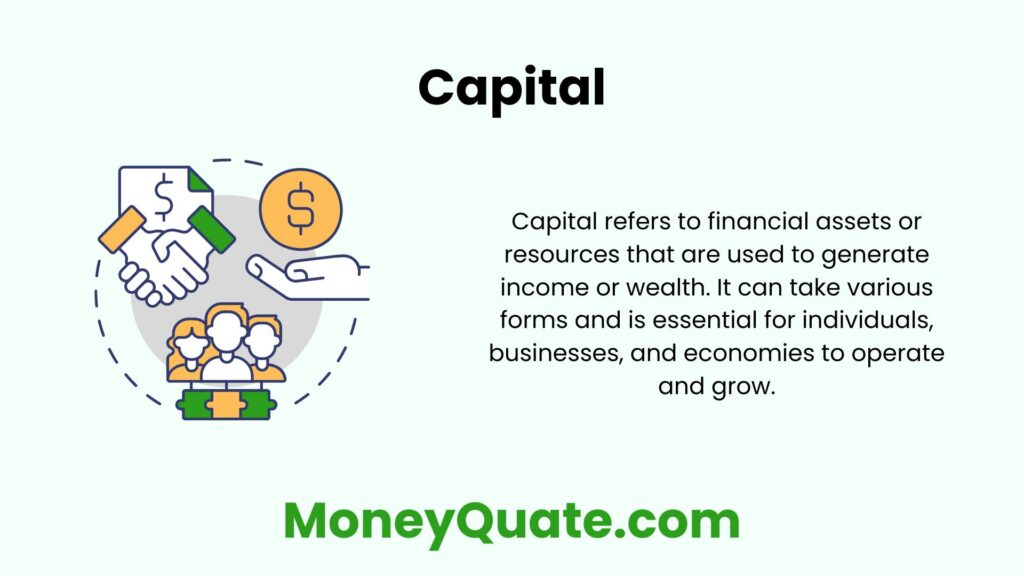Capital represents the financial resources available to a business or individual for investment purposes.
It can include both tangible assets (such as machinery or property) and intangible assets (such as intellectual property or brand equity).

Forms of Capital
Financial Capital
Money or liquid assets available for investment, including cash, bank deposits, and securities.
Physical Capital
Tangible assets used in production or operations, such as machinery, equipment, and real estate.
Human Capital
The skills, knowledge, and expertise possessed by individuals, which contribute to their productivity and earning potential.
Social Capital
The networks, relationships, and connections that facilitate business interactions, collaboration, and resource-sharing.
Intellectual Capital
Intangible assets such as patents, trademarks, copyrights, and proprietary technology that contribute to a company’s value and competitive advantage.
Role of Capital
Investment
Capital is used to finance investments in productive assets, innovation, research and development, and expansion initiatives.
Operations
Capital is essential for covering operating expenses, purchasing inventory, paying salaries, and maintaining day-to-day business activities.
Growth
Adequate capital enables businesses to pursue growth opportunities, enter new markets, and invest in marketing and promotional activities.
Risk Management
Having sufficient capital reserves can help businesses weather economic downturns, unexpected expenses, or market fluctuations.
Value Creation
Effective deployment of capital can enhance shareholder value, generate returns on investment, and increase profitability.
Sources of Capital
Equity Financing
Capital raised by issuing shares of ownership in a company, typically through the sale of stocks or ownership stakes.
Debt Financing
Capital obtained through loans, bonds, or other forms of borrowing, which must be repaid with interest over time.
Retained Earnings
Profits generated by a business that are reinvested into the company rather than distributed to shareholders as dividends.
Venture Capital
Funding provided by investors or venture capital firms to startups and early-stage companies in exchange for equity ownership.
Angel Investors
Individuals who provide capital to startups or small businesses in exchange for ownership equity or convertible debt.
Conclusion
Capital is a fundamental concept in finance and economics, representing the financial resources available to individuals, businesses, and economies.
It plays a crucial role in fueling investment, driving economic growth, and creating value for stakeholders.
Understanding the different forms, roles, and sources of capital are essential for effective financial management and strategic decision-making.
1 thought on “Capital 101: Understanding the Building Blocks of Wealth”